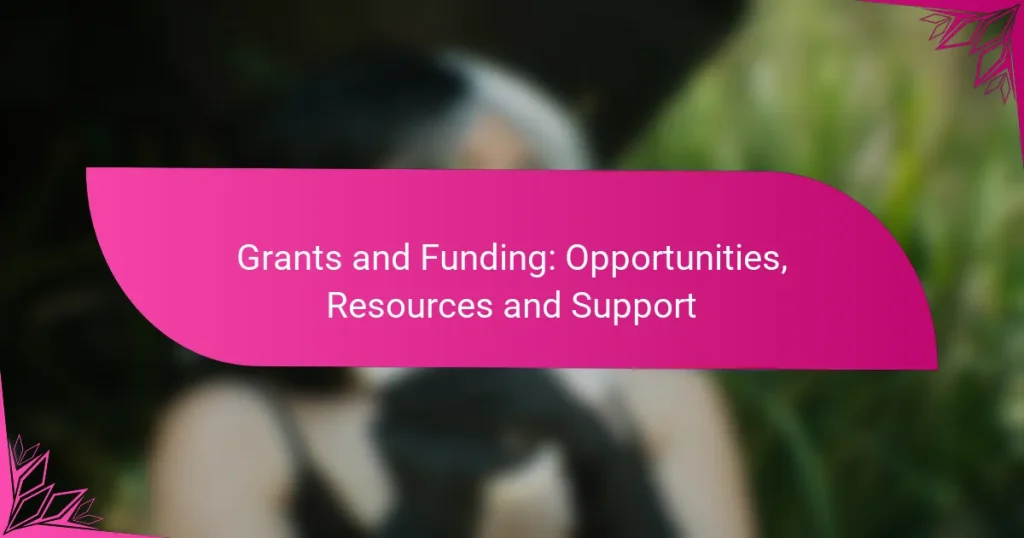Grants and funding opportunities in the United States are available for individuals, organizations, and businesses through various sources, including government entities and private foundations. Successfully applying for these funds requires a structured approach, including identifying suitable grants and preparing compelling applications. Additionally, numerous resources such as workshops and online databases can provide valuable support and guidance throughout the process.
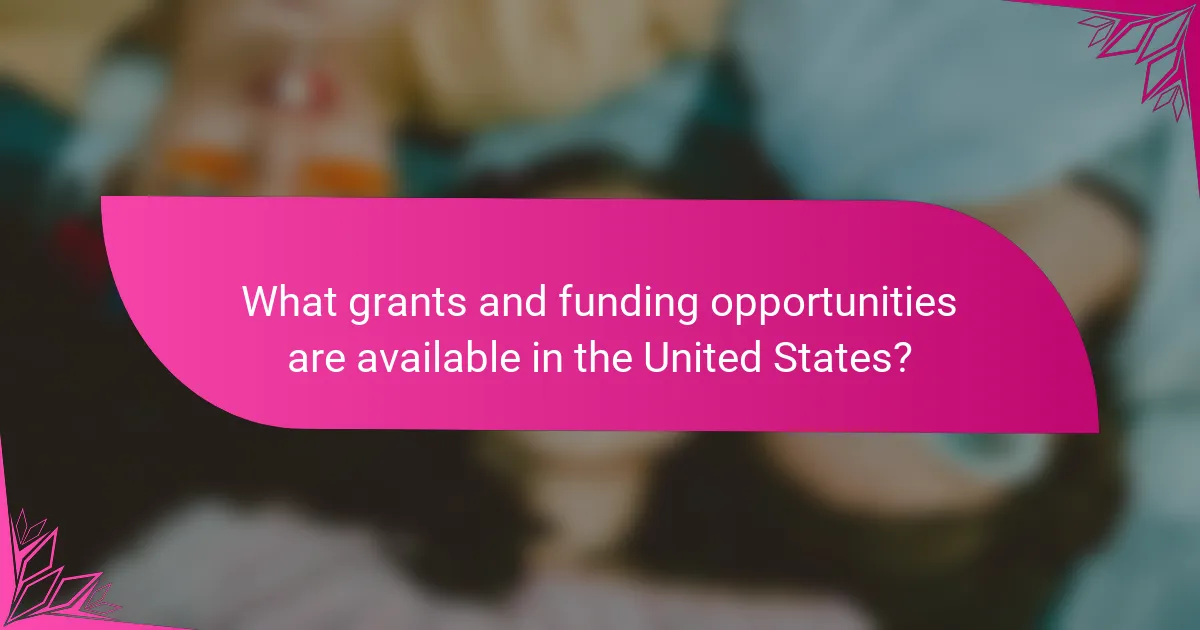
What grants and funding opportunities are available in the United States?
In the United States, various grants and funding opportunities exist for individuals, organizations, and businesses. These can be sourced from federal and state governments, private foundations, corporations, and nonprofit organizations, each offering unique benefits and requirements.
Federal grants
Federal grants are funds provided by the U.S. government to support specific projects or initiatives. These grants often target areas such as education, health, and research, and are typically awarded based on merit and need.
To apply for federal grants, individuals and organizations must register on Grants.gov, where they can find and submit applications for available funding. Common federal grant programs include the National Institutes of Health (NIH) grants and the National Science Foundation (NSF) grants.
State funding programs
State funding programs offer financial assistance tailored to local needs and priorities. Each state has its own set of programs that may focus on economic development, education, or community services.
Applicants should check their state’s official website for specific funding opportunities and application processes. For example, many states provide grants for small businesses or educational initiatives, often with less competitive requirements than federal grants.
Private foundation grants
Private foundations are nonprofit organizations that provide grants to support charitable activities. They often focus on specific areas such as arts, education, or health, and may have more flexible funding criteria compared to government grants.
To secure funding from private foundations, applicants should research foundations that align with their mission and submit tailored proposals. Notable foundations include the Bill & Melinda Gates Foundation and the Ford Foundation.
Corporate sponsorships
Corporate sponsorships involve businesses providing funding or resources in exchange for promotional opportunities. This type of funding is often seen in events, programs, or initiatives that align with the company’s brand or corporate social responsibility goals.
Organizations seeking corporate sponsorship should identify potential partners whose values match their own and prepare a compelling proposal that outlines the benefits of collaboration. Examples include sponsorships for community events or educational programs.
Nonprofit funding sources
Nonprofit funding sources encompass a variety of options, including grants, donations, and fundraising events. Nonprofits often rely on a mix of these sources to sustain their operations and programs.
To maximize funding, nonprofits should diversify their funding streams and engage with their communities through outreach and relationship-building. They can also apply for grants specifically designed for nonprofit organizations, such as those offered by the Community Foundation.
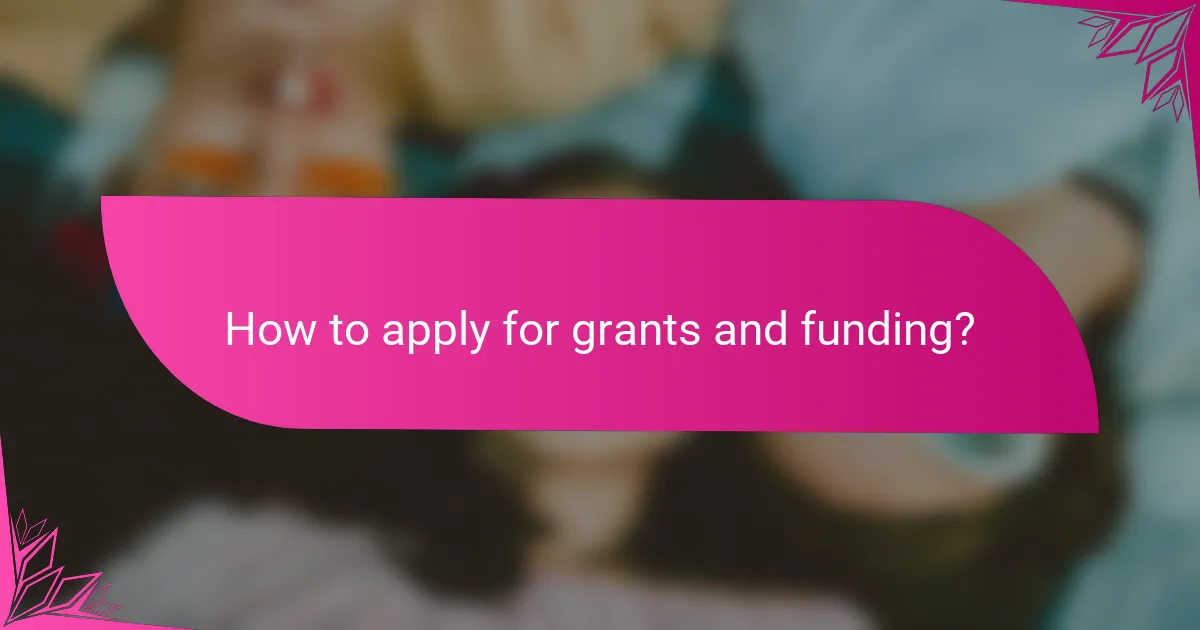
How to apply for grants and funding?
Applying for grants and funding involves a structured approach that includes identifying suitable opportunities, preparing a compelling application, and submitting required documentation. Understanding the specific requirements and processes for each grant can significantly enhance your chances of success.
Application process overview
The application process for grants typically begins with thorough research to identify funding sources that align with your project or organization. Once you have selected potential grants, carefully review their guidelines and deadlines to ensure compliance with all requirements.
Next, prepare your application, which usually includes a project proposal, budget, and supporting materials. After completing the application, submit it through the designated platform or method, often specified by the funding agency.
Required documentation
Additional materials may include letters of support, resumes of key personnel, and financial statements. Always check the specific requirements for each grant to ensure you provide all necessary documentation.
Common application mistakes
Another common error is submitting vague or poorly defined project goals. Ensure your objectives are clear, measurable, and aligned with the funder’s priorities. Lastly, neglecting to proofread your application can result in typos or errors that detract from your professionalism.
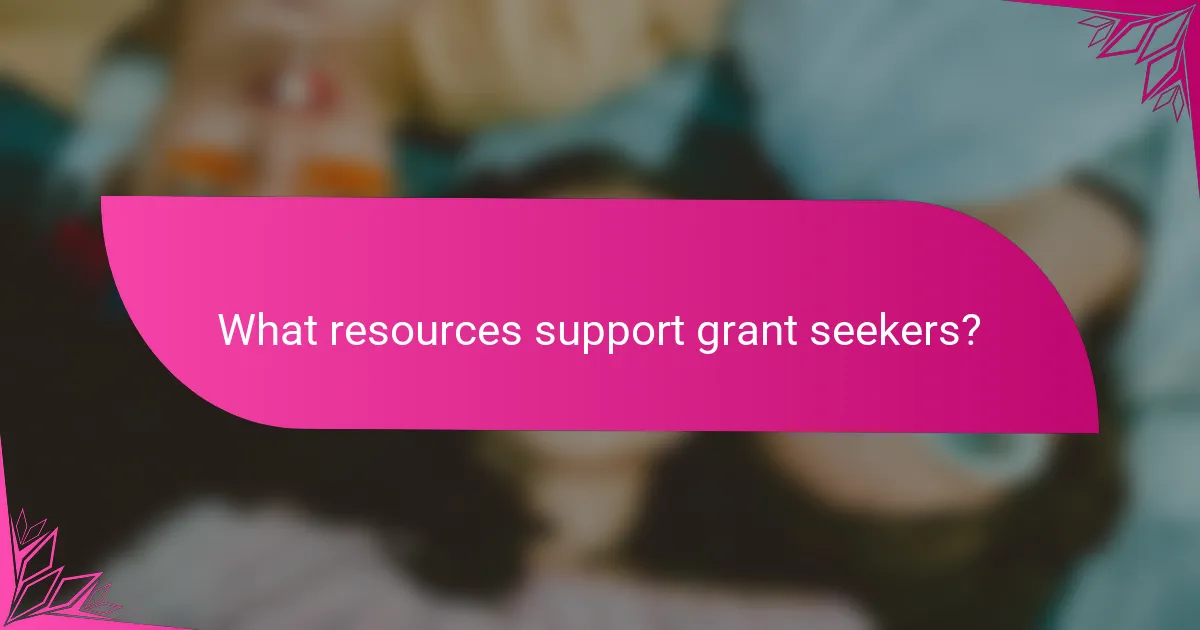
What resources support grant seekers?
Grant seekers can access a variety of resources designed to enhance their chances of securing funding. These resources include workshops, online databases, and advisory services that provide essential guidance and information.
Grant writing workshops
Grant writing workshops are structured sessions that teach participants how to effectively craft grant proposals. These workshops often cover key elements such as understanding funder priorities, developing a clear project narrative, and creating a realistic budget.
Many nonprofit organizations and educational institutions offer these workshops, sometimes at no cost. Attending a workshop can provide valuable feedback on your proposal and help you avoid common pitfalls.
Online grant databases
Online grant databases are comprehensive platforms where grant seekers can search for funding opportunities tailored to their specific needs. These databases typically allow users to filter results by criteria such as funding amount, eligibility, and application deadlines.
Popular databases include Grants.gov in the U.S. and the European Commission’s Funding & Tenders Portal in the EU. Subscribing to alerts from these databases can keep you informed about new opportunities that match your project goals.
Funding advisory services
Funding advisory services provide personalized assistance to grant seekers, helping them navigate the complex landscape of funding opportunities. These services may include one-on-one consultations, proposal reviews, and strategic planning sessions.
Many local governments and nonprofit organizations offer these services, sometimes free of charge or for a nominal fee. Engaging with an advisor can significantly improve your proposal’s quality and increase your chances of success.
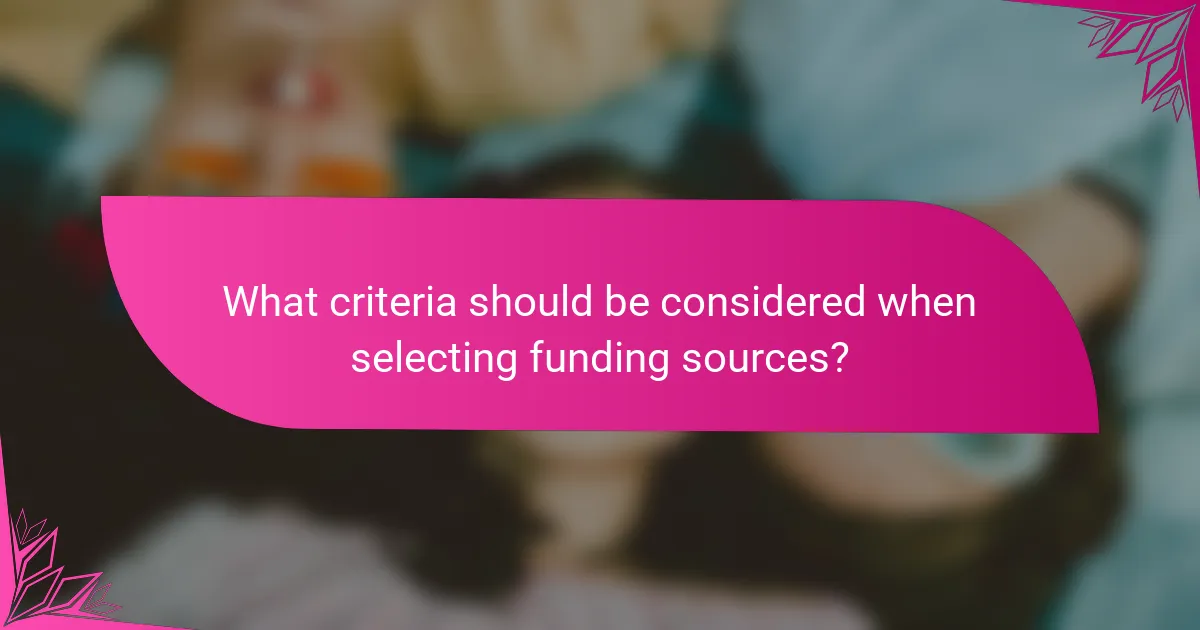
What criteria should be considered when selecting funding sources?
When selecting funding sources, consider eligibility requirements, funding amount and duration, and how well your project aligns with the funder’s goals. These criteria will help ensure that you choose the most suitable funding opportunities for your needs.
Eligibility requirements
Eligibility requirements vary significantly between funding sources. Common criteria include the type of organization (non-profit, for-profit, academic), geographic location, and specific project focus areas. For instance, some grants may only be available to organizations based in specific countries or regions.
Before applying, review the funder’s guidelines to confirm that your organization and project meet their eligibility criteria. Failing to meet these requirements can lead to wasted time and resources in the application process.
Funding amount and duration
Funding amounts can range from small grants of a few thousand dollars to multi-million dollar awards. It’s essential to assess whether the funding amount aligns with your project’s budget and financial needs. Additionally, consider the duration of the funding, as some grants are one-time awards while others may provide support over multiple years.
When evaluating funding sources, create a budget that outlines your project’s costs and compare it to the funding amounts offered. This will help you identify which sources can adequately support your project over its intended timeline.
Project alignment with funder goals
Understanding the funder’s goals is crucial for successful funding applications. Funders typically have specific missions or priorities that guide their funding decisions, such as community development, environmental sustainability, or education. Ensure your project aligns with these goals to increase your chances of receiving support.
Research past funded projects to see what types of initiatives the funder has supported. Tailor your proposal to highlight how your project contributes to their objectives and demonstrates a clear impact in the relevant area.
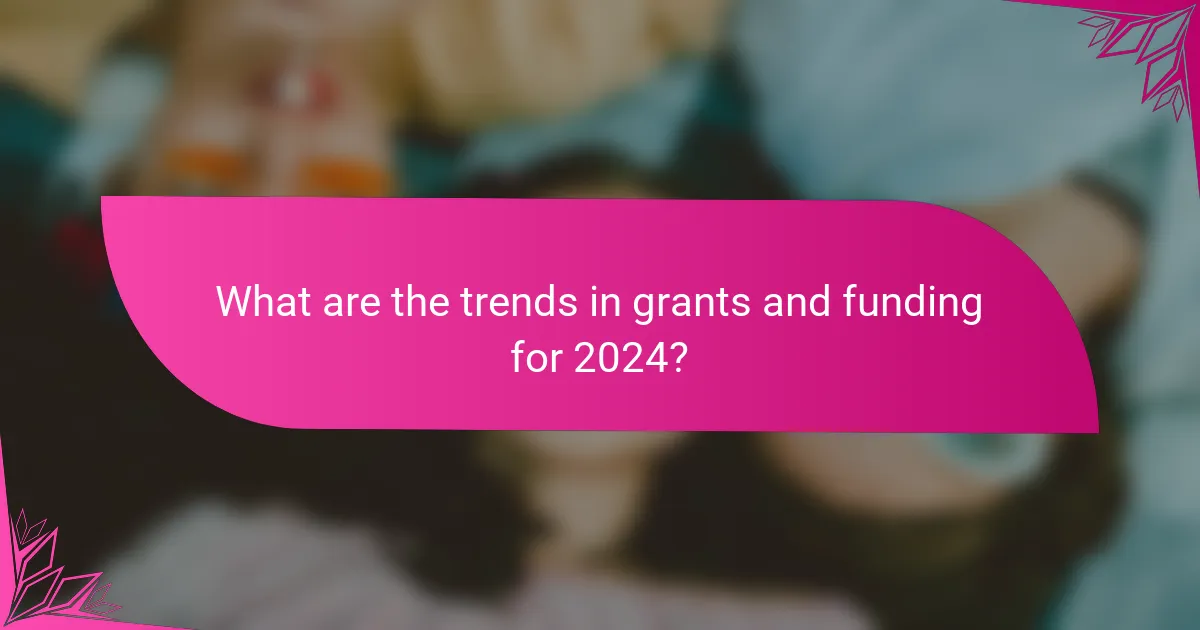
What are the trends in grants and funding for 2024?
In 2024, grants and funding are increasingly emphasizing sustainability and emerging technologies. Organizations are prioritizing projects that align with environmental goals and innovative tech solutions, reflecting broader societal shifts towards responsible investment and modernization.
Increased focus on sustainability
Funding opportunities in 2024 are heavily leaning towards sustainability initiatives. This includes grants for renewable energy projects, conservation efforts, and sustainable agriculture. Organizations seeking funding should align their proposals with environmental impact goals to enhance their chances of success.
Potential funders may include government agencies, non-profits, and private foundations that prioritize eco-friendly projects. Applicants should clearly demonstrate how their initiatives contribute to sustainability, possibly through measurable outcomes or community benefits.
Emerging technology funding
Grants for emerging technologies are on the rise, particularly in areas like artificial intelligence, biotechnology, and clean tech. These funds aim to support innovative solutions that address current challenges, such as healthcare advancements or climate change mitigation.
To secure funding, applicants should focus on demonstrating the potential impact and scalability of their technology. Collaborating with industry experts or academic institutions can strengthen proposals, showcasing a robust understanding of the technology’s application and market viability.
